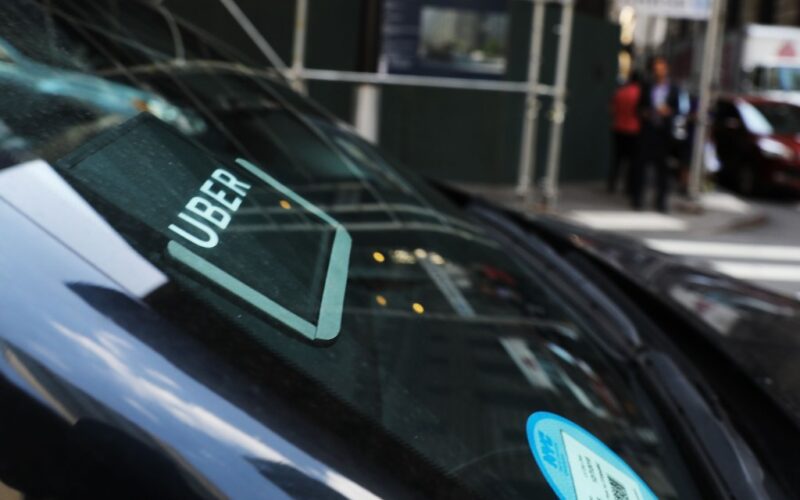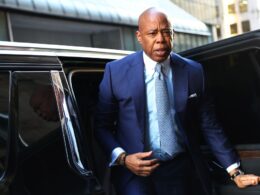The city Taxi and Limousine Commission will hold a hearing on Feb. 5 to consider proposals that would raise pay for Uber and Lyft drivers and deal with the egregious company practice of “locking out” drivers. By blocking drivers’ use of the company apps, lock outs prevent drivers from earning a living and being able to pay for the vehicles the companies require them to buy or rent to transport passengers.
It’s hard to think of a more cynical labor practice that flaunts corporate power over workers. In effect, the companies are saying to drivers, “you have to buy the capital needed to make our business model work, and by the way, we’ll let you know when it’s convenient for us to let you work.” So much for flexible gig work.
Anticipating the TLC proposals, Uber, which commands three-fourths of the city’s ride-dispatch market, has been pushing to cut driver pay. Uber argues that its drivers earn more than the starting pay for city emergency medical technicians, and that driver pay rose by 20% over the past five years (the same as the increase in the area consumer price index).
There’s no question that EMTs are underpaid but the Uber pay comparison severely low-balled driver expenses and ignores the fact that EMT pay rises with years of experience (Uber pay doesn’t) and EMTs have employer-paid family health insurance and pensions. As independent contractors, Uber and Lyft drivers have no employer-funded benefits, and drivers have to shoulder the employer’s payroll tax share.
Before the TLC instituted the minimum pay standard in 2019 three-quarters of Uber and Lyft drivers were paid below the minimum wage. The TLC pay standard smartly included an annual consumer price index adjustment, something that lawmakers short-sightedly left out of New York’s minimum wage law until 2023.
Even though the driver pay standard kept up with inflation from 2019-24, Uber claims that rising driver pay bumps cause passenger fares to rise. From the second half of 2019, the first year of the pay standard, to the second half of 2021 as the city was emerging from the pandemic, per trip passenger fares and driver pay (including bonuses) rose in tandem, with Uber’s take rising 10% faster.
However, over the next two years from the second half of 2021 to the second half of 2023, passenger fares rose by 14% while driver pay per trip was flat. On the other hand, Uber’s share of the passenger fare (which Uber calls its “take,” the source of its profits), soared by 128%. Average fares rose by $3.14 with all of that going into Uber’s pocket and not a cent going to drivers.
Uber, not the TLC, sets ride-dispatch passenger fares. If Uber is concerned that rising fares are discouraging passengers, it has wide latitude to lower its take.
Uber’s secret is that once it has attracted more than enough drivers to its platform to meet passenger demand for rides, it reduces cash incentives and pushes driver pay down to the minimum. An excess number of drivers relative to ride demand reduces driver earnings opportunities. Only Uber controls the number of drivers on its platform. It is in a position to responsibly regulate access to its platform to maintain driver earnings, but it hasn’t done that. It resorted to locking out drivers when faced with the possibility of the TLC resetting driver pay (upward) when utilization rates fell.
The purpose of having average utilization — the portion of a driver’s working time with a passenger in the car — in the TLC pay formula was to compel the companies to responsibly regulate the supply of drivers to ensure they have access to a sufficient number of ride offers. If utilization went up, driver pay per trip would decline but without reducing total driver pay since trips per driver would rise. But if utilization falls, then driver pay per trip would rise as rides per driver declines.
Uber and Lyft onboarded too many drivers, pushing down utilization and then blamed the TLC when they locked drivers out.
The TLC put utilization in the pay standard to ensure that drivers would be paid for all of their working time, a principle Uber’s CEO Dara Khosrowshahi understands since he recently told the Wall Street Journal, “for drivers, time is money.” The new TLC rules are just the latest iteration in New York City’s global leadership role in regulating gig work.
Parrott is a senior advisor and senior fellow at Center for New York City Affairs at The New School.








